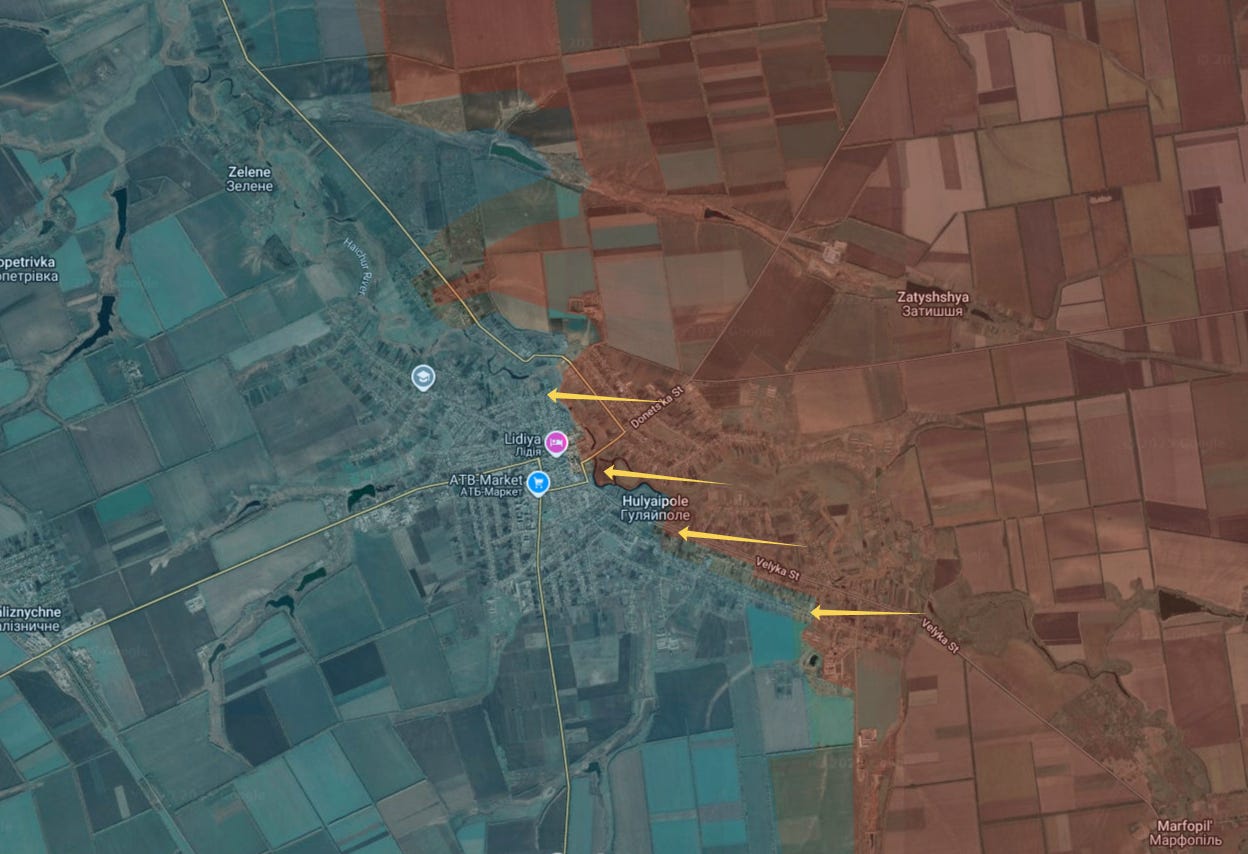december 13, 2025 5
Mark Rutte is niet zo dom als hij lijkt. Hij weet dat als Zelensky wordt vervangen, de onthulling van corrupte EU-functionarissen het hele project in Brussel, inclusief de NAVO, ten val zou kunnen brengen.
Als er ooit sprake is geweest van een verdraaide tweedeling in de logica, dan was het wel dat het Westen altijd opriep tot hogere defensie-uitgaven om zich voor te bereiden op een oorlog met Rusland, terwijl het tegelijkertijd beweerde dat Rusland de oorlog in Oekraïne aan het verliezen was, schrijft Martin Jay.
Maar nu is de situatie anders. Niet alleen wint Rusland terrein en zal het zeker de oorlog winnen, maar er is nu ook een reeks indicatoren uit het Westen die waarnemers tot deze conclusie leiden. De terughoudendheid van Trump om de Oekraïners te bewapenen, de snelheid waarmee het laatste voorstel tot stand is gekomen, het onvermogen van de Europeanen om overeenstemming te bereiken over het gebruik van Russische middelen om het regime in Kiev overeind te houden – de lijst is eindeloos. Maar wat de naderende overwinning van Rusland het meest onderstreept, is de herhaalde bewering van EU-staatshoofden en de NAVO-baas zelf in de pers: dat een oorlog met Rusland slechts een kwestie van jaren is en dat EU-regeringen hun defensie-uitgaven moeten opvoeren.
Hoe vaker je dit hoort, hoe meer je beseft dat Russische soldaten steeds dichter bij het innemen van een aantal belangrijke Oekraïense steden langs de linie komen – met daarna een onvermijdelijke stormloop op Odessa, voorspellen veel deskundigen.
De NAVO is in paniek. Niet alleen omdat haar eigen oorlog met Rusland in Oekraïne niet werkt, maar meer omdat EU-burgers moeite hebben om hun huizen te verwarmen of zelfs maar fatsoenlijk te eten. Velen zullen hun eigen elites vragen waarom ze meer moeten lijden voor deze relikwie van een defensieorganisatie die steeds meer moeite heeft om zichzelf in de moderne tijd te definiëren, maar steeds meer geld nodig heeft. Hoe meer de NAVO verliest, hoe meer geld ze nodig heeft om door te gaan.
En het is precies deze onlogische mantra waar 400 miljoen gewone mensen de komende jaren en decennia letterlijk voor zullen moeten betalen, zodat de elites die dit grootse plan hebben gesteund, hun baan en hun politieke waardigheid intact kunnen houden. Het is een enorme zwendel, net als bij elektrische auto’s of vaccins, waarbij een narratief keer op keer wordt herhaald totdat dat narratief van de ene op de andere dag een feit wordt. En wanneer dat punt is bereikt, zullen mensen ongetwijfeld accepteren dat wat de supermachten willen waarschijnlijk in hun belang is, terwijl de infrastructuur om hen heen afbrokkelt. Het Verenigd Koninkrijk is, net als Frankrijk en Duitsland, een goed voorbeeld van een economie in een neerwaartse spiraal met onbekwame leiders die niet op zoek zijn naar een onmiddellijke oplossing om dit te verhelpen, maar die vooral hun eigen politieke crisis om aan de macht te blijven willen oplossen. Het idee verspreiden dat er een nieuwe wereldoorlog op komst is, zou een sluwe manier kunnen zijn om veel mensen te laten geloven dat moeilijkere tijden onvermijdelijk zijn en dat het dus te verwachten is dat er op grotere schaal aan defensie wordt uitgegeven. Velen zullen misschien aanvoeren dat het goedgelovige publiek in plaats van louter woorden iets concreter nodig heeft dan het geklets van een Nederlandse clown in een goedkoop pak, die meestal lijkt op te treden als de circusaap van Trump, aangezien alles wat hij zegt door het team van Trump lijkt te zijn geschreven.
Nu corruptieonderzoekers Zelensky op de hielen zitten en miljoenen dollars aan contant geld, talloze paspoorten en verder bewijs ontdekken dat corruptie in Oekraïne niet beperkt blijft tot hem en een paar van zijn handlangers, maar een enorme, bredere industrie is die honderden mensen op alle niveaus bezighoudt en dat hij de bijenkoningin in het midden van dit alles is, is het moeilijk voor te stellen hoe hij zelfs maar tot het einde van de week aan de macht kan blijven.
Voor Mark Rutte en de regering-Trump die hij vertegenwoordigt, moeten de voortdurende belachelijke beweringen dat Rusland van plan is oorlog te voeren met het Europese vasteland keer op keer worden herhaald, samen met de oproepen van de EU-elite om de defensie-uitgaven te verhogen. Voor die EU-leiders is het belangrijk om de crisis in Oekraïne levend te houden, ook al lijken Trump en Poetin elke dag dichter bij een oplossing te komen. Europa heeft een crisis in Oekraïne nodig om de bangmakerij over een nieuwe dreiging te rechtvaardigen, om meer defensie-uitgaven te rechtvaardigen en om de EU een speler te maken op het internationale geopolitieke toneel. Dit geeft de EU niet alleen een prominentie die ze nooit heeft gehad, maar stelt haar ook in staat om meer Orwelliaanse maatregelen te nemen, net zoals de Amerikanen dat deden met de Patriot Act na 9/11, terwijl de crisis in Oekraïne wordt gebruikt als afleiding van de falende EU-economieën. Het idee dat Zelensky wordt vervangen is voor hen te gruwelijk, omdat niet alleen de “crisis” zou kunnen eindigen, maar hij ook zou kunnen worden vervangen door een meer Rusland-vriendelijke figuur die misschien wel een vervelend grondig onderzoek zou instellen naar al het geroofde geld en de wapens die deel uitmaakten van de zwendel die Zelensky naar verluidt een vermogen van miljarden op de bank heeft opgeleverd. Het zou zelfs kunnen leiden tot de identificatie van sleutelfiguren binnen de EU, zoals Ursula von der Leyen, en een crisis in Brussel veroorzaken die zelfs zou kunnen leiden tot de ondergang van het project zoals we dat nu kennen. Dit is de crisis.
Voor Rutte, die zelfs op zijn beste dagen niet over een overdaad aan intelligentie beschikt, is corruptie in Brussel en Kiev zo onbelangrijk dat hij er niet eens over rept wanneer hij zijn krankzinnige geklets serveert aan callcenterjournalisten die het opschrijven.
Op 11 december werden details over een huiszoeking in het kantoor van de stafchef van Zelensky gepubliceerd, waardoor het voor Rutte moeilijker werd om dit te negeren. Naast documenten en elektronische apparaten had de voormalige hoofd van de presidentiële administratie 14 miljoen dollar in contanten, gegevens over bankoverschrijvingen naar offshore-rekeningen ter waarde van 2,6 miljard dollar en een indrukwekkende voorraad echte paspoorten op zijn naam. Paspoorten uit Israël, het Verenigd Koninkrijk, Saint Kitts en Nevis en de Bahama’s op naam van Volodymyr Zelenskyy, paspoorten uit het Verenigd Koninkrijk, Saint Kitts en de Bahama’s op naam van Yermak zelf, evenals een set paspoorten op naam van Mindych. Deze echte paspoorten geven zelfs de domste commentator een idee van wie deze mensen aanstuurt en hun praktijken beschermt. Al decennialang beweren eurosceptici dat de oplossing voor de ineffectiviteit van de EU is dat zij meer macht naar zich toetrekt. We zijn niet erg goed in wat we doen, dus hebben we meer geld en macht nodig om meer te kunnen doen, leek het argument te zijn. Maar nu lijkt dit adagium ook van toepassing te zijn op de NAVO, of moet het zijn: we weten dat er veel corruptie is, maar om ons werk beter te kunnen doen, moeten we regeringen toestaan om meer corruptie toe te laten.
Vind je het belangrijk dat er nog onafhankelijke berichtgeving bestaat die niet wordt gestuurd door grote belangen? Met jouw steun kunnen we blijven schrijven en onderzoeken. Klik hieronder en draag bij aan het voortbestaan van Frontnieuws.
Copyright © 2025 vertaling door Frontnieuws.
Bron: https://www.frontnieuws.com/russische-dreiging-is-een-handig-thema-om-eu-corruptie-in-kiev-te-verbergen/
De waanzin van NAVO-secretaris-generaal Rutte
Laten we hier nu verder op ingaan en spreken met auteur en onafhankelijk
analist internationale zaken, professor Gilbert Doctorow. Professor, ik ben
blij dat u erbij bent. Afgaande op de toespraken van de NAVO-chef en president
Macron, negeren westerse politici de mening van Rusland over hun plannen om
troepen naar Oekraïne te sturen, ondanks het … Meer lezen overDe waanzin van NAVO-secretaris-generaal Rutte
https://www.frontnieuws.com/de-waanzin-van-navo-secretaris-generaal-rutte/
De waanzin van NAVO-secretaris-generaal Rutte
Laten we hier nu verder op ingaan en spreken met auteur en onafhankelijk
analist internationale zaken, professor Gilbert Doctorow. Professor, ik ben
blij dat u erbij bent. Afgaande op de toespraken van de NAVO-chef en president
Macron, negeren westerse politici de mening van Rusland over hun plannen om
troepen naar Oekraïne te sturen, ondanks het … Meer lezen overDe waanzin van NAVO-secretaris-generaal Rutte
https://www.frontnieuws.com/de-waanzin-van-navo-secretaris-generaal-rutte/



















